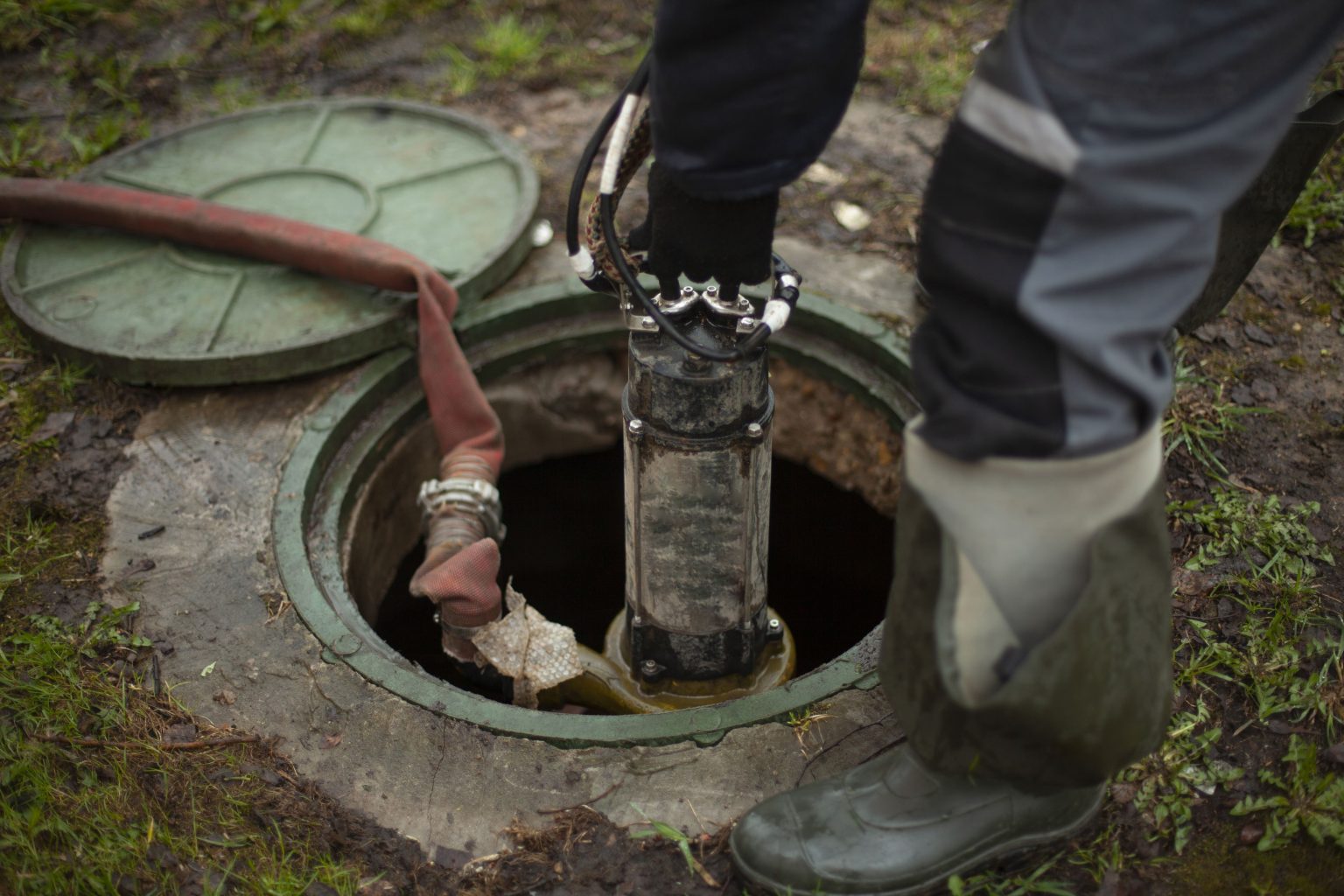If your home relies on a septic tank, keeping it properly maintained isn’t just a matter of convenience – it’s essential for your health, your property, and your wallet. Neglecting regular emptying can lead to unpleasant odours, sluggish drains, and even raw sewage backing up into your home or garden. Worse yet, delayed maintenance can cause long-term damage to the system, leading to expensive repairs or complete tank replacement.
That’s why booking a reliable septic tank emptying service is one of the most important tasks a homeowner with off-mains drainage should schedule regularly. Whether you’ve just moved in, or it’s been a while since your last service, this guide will walk you through the when, why, and how of septic tank maintenance – and help you avoid messy surprises later on.
How Septic Tanks Work and Why They Need Emptying?
A septic tank is an underground system that separates and processes household wastewater from toilets, sinks, and appliances. Unlike main sewer systems that carry waste away, septic tanks rely on natural bacterial processes and gravity to manage waste on-site.
Here’s how it works:
Wastewater flows into the tank, where solids settle to the bottom (forming sludge), and lighter materials like fats and oils float to the top (forming scum). The middle layer of relatively clear liquid then flows out into a drainage field for further natural filtration.
But here’s the catch – sludge and scum don’t disappear on their own. Over time, they build up and reduce the tank’s capacity to function properly. If not emptied regularly, the tank can overflow, clog the drainage field, or even back up into your home.
TIP: Most septic tanks need emptying every 12 to 18 months, depending on usage, tank size, and household occupancy. Keeping a regular schedule prevents system failure and extends the lifespan of your tank.
Ignoring your tank’s maintenance not only causes unpleasant odours and poor drainage but can also lead to irreversible damage. In some cases, the entire system may need to be replaced – a costly and avoidable outcome.
Key Signs Your Septic Tank Needs Emptying
One of the biggest mistakes homeowners make is waiting until there’s a serious problem before scheduling septic maintenance. Fortunately, your tank gives off several early warning signs that it’s reaching capacity, and knowing what to watch for can save you a lot of stress (and money).
Here are the most common red flags:
- Slow Drains
If water is draining slowly from sinks, showers, or bathtubs, it could indicate a buildup of sludge in the tank, restricting flow. - Unpleasant Odours
Foul smells coming from outdoor drains, toilets, or the garden area above the tank are a strong sign that waste levels are too high. - Gurgling Sounds in Pipes
Unusual bubbling or gurgling noises from your plumbing system suggest trapped gas or air caused by poor flow or backups. - Soggy Patches or Standing Water in the Yard
If wastewater is unable to drain into the soakaway field, it may rise to the surface, turning your garden into a swampy mess. - Toilets Flushing Slowly or Backing Up
Difficulty flushing or water backing up into the bowl can mean your tank is overfilled and needs immediate attention.
TIP: Even if none of these signs are present, it’s wise to keep a record of your last service and empty the tank proactively – prevention is always cheaper than emergency repair.
These warning signs are your tank’s way of asking for help. If you notice one or more of them, it’s best to arrange a professional inspection and emptying service without delay.
How Often Should You Empty a Septic Tank?
There’s no universal rule for how often a septic tank should be emptied – it depends on your tank size, household habits, and the number of people using the system. That said, regular maintenance is critical to avoid overflow, damage, and unpleasant surprises.
Here’s a general guideline based on property type and usage:
- Standard Household (2–4 people)
Every 12 to 18 months, the average sludge build-up rate requires annual attention for optimal system health. - Large Household (5+ people)
Every 6 to 12 months, more wastewater and solid waste means faster accumulation. - Holiday Homes / Low Usage Properties
Every 2–3 years, but still essential to inspect annually, especially after long periods of non-use. - Commercial or Rental Properties
Every 6–12 months, depending on occupancy and water usage, especially where multiple users share facilities.
TIP: Even if your tank isn’t at full capacity, sludge and grease can harden over time, making it harder (and more expensive) to remove later. Regular emptying is cheaper and prolongs system life.
Keep in mind that septic systems are designed to work efficiently only when solids don’t exceed a certain level. Letting waste build up too far puts pressure on the drainage field and risks costly system failure.
Many homeowners feel unsure about what happens when a septic tank is emptied, and that uncertainty can delay necessary maintenance. In reality, the process is quick, clean, and handled entirely by professionals using specialist equipment.
Here’s what to expect during a typical visit:
- Arrival and Setup
A vacuum tanker arrives on-site, and the operator locates your septic tank access point. This might be a covered hatch in your garden or driveway. - Inspection
Before pumping begins, the engineer may perform a quick visual check to assess the tank’s condition and confirm the waste level. - Emptying Process
Using a powerful suction hose, the technician removes the sludge, scum, and liquid from the tank into the tanker unit. This takes around 30–60 minutes, depending on the size and contents. - Rinse (if needed)
In some cases, the tank is flushed with clean water to remove residual solids and prevent future blockages. This isn’t always required, but is common for overdue services. - Final Check and Report
The operator ensures the tank is fully emptied and that there are no signs of structural damage or backflow. You may receive a basic service report or recommendation for the next visit.
TIP: You don’t need to be at home for the entire process, as long as the tank is accessible. However, it’s helpful to be available in case the engineer needs guidance or spots an issue that requires your attention.
Septic tank emptying is a routine job for experienced engineers, and when done regularly, it takes less than an hour and leaves no mess behind.
Risks of Skipping Regular Septic Tank Maintenance
Delaying or avoiding septic tank emptying might seem harmless, especially if everything appears to be “working fine.” But the reality is that most septic problems develop silently, and by the time they’re noticeable, the damage is already done.
Here’s what can go wrong if you skip regular servicing:
- System Overflows
Once the tank fills up with solids, it can overflow into your drainage field or back up into the property. This can result in flooding, contamination, and costly clean-up. - Drain Field Failure
When a tank is too full, solid waste can enter the soakaway area and clog it. A damaged drain field often requires complete replacement – one of the most expensive septic-related repairs. - Unpleasant Odours and Health Hazards
Accumulated waste leads to foul smells and increased bacteria levels around your home. This isn’t just unpleasant – it poses real health risks, particularly to children and pets. - Legal and Environmental Issues
Leaking or overflowing tanks can contaminate local water supplies and land. In some areas, this can result in fines or legal liability for pollution.
TIP: Reactive maintenance is almost always more expensive than preventive service. A scheduled emptying visit costs far less than emergency call-outs or full system replacement.
For example, companies like DrainBoss offer reliable septic tank emptying with flexible scheduling and no hidden fees, making it easy for homeowners to stay on top of their system’s needs without the stress of last-minute problems. With a proper maintenance schedule, you don’t just protect your property – you protect the environment, your health, and your finances.
Final Thoughts: Keep Your Septic System Healthy
Owning a septic tank comes with responsibility. While it may feel like an “out of sight, out of mind” system, ignoring it can quickly lead to disruptive and expensive consequences. Regular emptying is a simple, low-cost way to keep your system working efficiently – and to avoid unexpected emergencies. Routine servicing not only prevents blockages and overflows but also extends the life of your tank and drainage field. It’s one of the most practical forms of home maintenance you can invest in.For example, DrainBoss provides scheduled septic tank emptying services across the UK, with trained engineers and transparent pricing, helping homeowners stay compliant and avoid costly surprises. By paying attention to your system and acting before problems arise, you ensure clean water, a safe home environment, and peace of mind for years to come.



